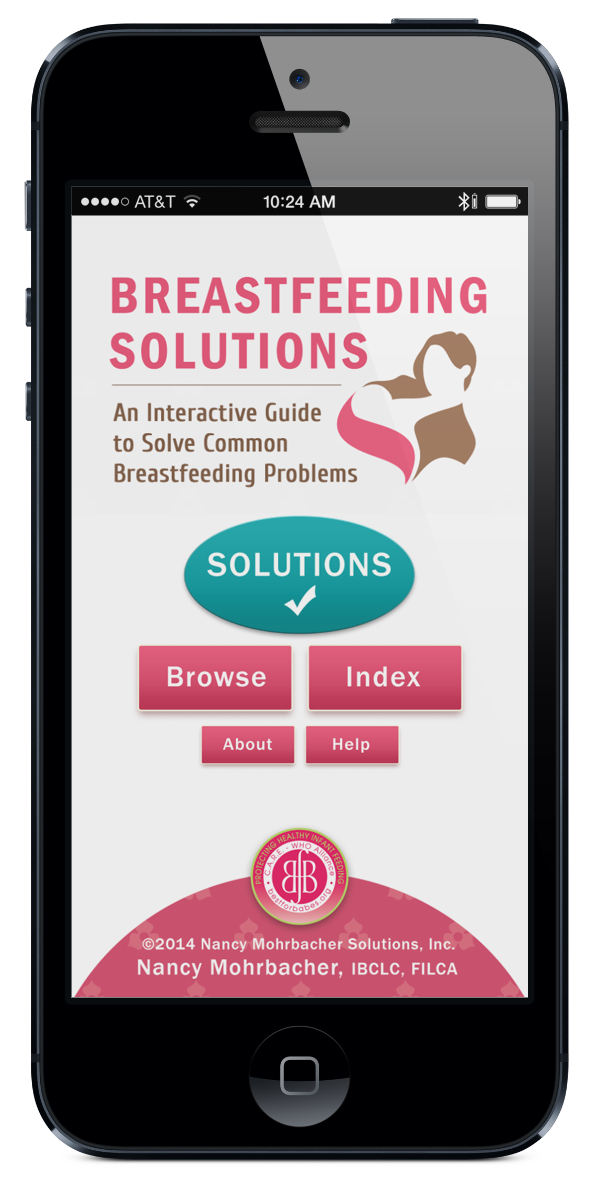Written By Marsha Walker, RN, IBCLC and Danielle Rigg, JD, CLC
© 2008 Best for Babes, LLC, All Rights Reserved.
Common Breastfeeding Issues Jaundice
Jaundice is a well-known and well-studied newborn condition that can really shake the boat of new parent bliss. (Others include: maternal fever, sore nipples, breast implants and reductions, baby’s low blood sugar (hypoglycemia), and insufficient milk supply, and we will cover these later so keep checking back!) In fact, jaundice gets a “bad rap” as being an undesirable result of breastfeeding, and therefore, often results in replacing breastfeeding with formula, partially, or even completely. Lots of myth and misguided advice surround how to avoid and treat jaundice. Here we give you the information and the tools to navigate your way safely through this condition, should it arise.
What is jaundice? Most jaundice is a normal newborn process experienced by about 60% of all healthy newborns (MacMahon et al, 1998) and and does not usually require formula supplementation or that breastfeeding be interrupted. ( AAP,2004). See www.aappolicy.aappublications.org/cgi/content/full/pediatrics;114/1/297 and our section Supplementing below. Jaundice is not considered dangerous to your baby in its non-severe form. Jaundice is a yellow coloring of the skin and whites of the eyes caused by a build up of bilirubin (a breakdown product of excess red blood cells) in the blood, usually appearing during baby’s first 2 to 5 days of life. It typically clears on its own in about a week through frequent (at least 8-10 times per day) breastfeeding which causes your baby to stool and eliminate the bilirubin from its body.
What can I do to prevent severe jaundice? In most cases, jaundice levels can be kept within the normal range by following the basic steps to successful breastfeeding: initiating breastfeeding within the first hour of baby’s birth, feeding the baby on cue (this means “baby-led,” frequent and unscheduled feedings — at least 8-10 times per 24 hours), keeping baby with you during your hospital stay, and lots of skin-to-skin contact. Make sure your baby is really swallowing as frequent breastfeeding will not lower bilirubin levels unless the baby is actually taking in colostrum and milk. If you are not sure that the baby is swallowing, get the hospital IBCLC (Internationally Board Certified Lactation Consultant) or a private LC to observe a feeding. See our Get Your Best Game On Game Plan for more details on how to get breastfeeding off to a great start.
Are there any special risk factors for jaundice I should know about? YES.
Babies who are not latched well are at an increased risk for developing higher jaundice levels because they are not transferring, or getting enough, milk. To make sure the baby is latched correctly (corner of mouth open 160 degrees), and is really swallowing colostrum, you can listen for the swallow, or look for the baby’s jaw to drop and hold for a fraction of a second. If you cannot tell whether the baby is swallowing, get the the hospital or an independent LC to help you.
Babies who are the product of deliveries with lots of medications and interventions, ie., forceps, vacuum extractions (Hall et al, 2002), and c-sections (Dewey et al, 2003) sometimes don’t nurse well initially (Smith, 2007).
Late preterm infants (born between 34-37 weeks gestation) are at a much higher risk for jaundice because they are usually sleepier than full-term babies and often don’t feed well (Watchko, 2003; Sarici et al, 2004).
Mothers who are diabetic are at a higher risk of delivering at 34-37 weeks (Lepercq, 2004), and therefore, their babies are at higher risk for jaundice.
What should my game plan be if I deliver between 34 and 37 weeks or I am diabetic?
- Late preterm infants (born between 34 and 37 weeks) and even those born between 37 and 39 weeks need at least 10-12 feedings per 24 hours (Meier et al, 2007).
- Late preterm infants are easily overwhelmed by bright lights, noise, and visitors. You should ask friends and family to limit or avoid visiting for the first 2 weeks until you and your baby are in a good breastfeeding groove. Please don’t interrupt or postpone breastfeeding because of visitors!
- If you are diabetic, consider hand expressing colostrum and freezing it before the baby is born (your boobs are at the ready long before birth), and bring it to the hospital to feed to the baby if he/she does not latch or experiences significant hypoglycemia (low blood sugar levels) (Cox, 2006).
What if the jaundice does require additional medical treatment? If the bilirubin levels continue to rise beyond moderate levels, phototherapy may be recommended. This light therapy can be provided through a special set of lights, a blanket, or a band. If you are still in the hospital, ask that the phototherapy be done in your room. Sometimes your baby may be sent to the special care nursery. Most of the time, this does not mean that you need to stop breastfeeding or supplement with formula! (Gartner 2001)
What should my game plan be if my baby needs extra medical care in the nursery? If your baby is in the special care nursery, your colostrum can be drawn up into a syringe and fed to the baby. You will need to consider pumping milk if your baby is born before 37 weeks -preterm or preemie. See above Game Plan.
What are the signs indicating a potential problem? Since many babies are released from the hospital at 1 or 2 days of life, before your milk comes in fully, some problems become more apparant once you are home. This is another good reason to see an LC before you are discharged and to have the name and number of one who can give you excellent follow-up help once you are home.
Call your baby’s doctor if your baby:
- Refuses breastfeeding or bottle feeding;
- is sleepy all the time -lethargic or limp
- Has lost a significant amount of weight (more than 10% of her weight at birth); or
- Is extremely jaundiced (trunk, arms and legs are a yellow or orange color)
- Develops a fever over 100 degrees
- Has only a few wet diapers or stools (<3 on day 3, <4 on day 4)
If you your pediatrician discovers high bilirubin levels at about day 3, you should be seen immediately by a lactation specialist to find out why your baby is not transferring milk.
What if the hospital or doctor recommends that my baby be supplemented? You shouldn’t have to discontinue breastfeeding altogether, or resort immediately to a bottle of formula, to resolve jaundice. Supplementing with formula is not the only or even preferable way to fix rising bilirubin levels. You have options here:
Best plan: You get the hospital or an independent lactation consultant involved and have her show you how to supplement your baby with your expressed (by hand or by pump) milk or colostrum with a spoon, cup, or even at the breast via an infant feeding tube (oral).
Second-best plan: If, for whatever reason, you cannot express enough milk/colostrum, then small amounts of screened, pasteurized donor human milk can be substituted. At the same time continue to stimulate the breasts to make milk by hand expressing or pumping.
Third-best plan: If the hospital does not keep a small stash of banked human milk on hand for these occasions, a hydrolyzed formula, not a standard one, can be substituted for your milk. Hydrolyzed formula helps reduce the risk for sensitizing a susceptible baby to allergies or diabetes. Continue to stimulate the breasts to make milk by hand expressing or pumping, so that when any latch difficulties have been solved, you are making enough milk for your baby.
Note that formula is the choice of last resort according to this evidence-based recommendation.
Other Resources:
Dr. Jay Gordon says: “Jaundice itself may not be a problem but increased jaundice may indicate poor breastfeeding. This is a problem and this is one of the reasons that the “knee jerk” reaction to jaundice is so dangerous. Instead of just attempting to change the baby’s color from slightly yellow (or quite yellow) we should be looking much harder at the reason for the increased bilirubin. Lactation consultation is usually much more valuable than bilirubin tests and bili lights.” www.drjaygordon.com
Also search www.kellymom.com, www.askdrsears.com and www.drjacknewman.com for “newborn jaundice” for additional helpful information.
The American Academy of Pediatrics (www.aap.org) has also issued new guidelines for managing jaundice, accessible on their website.
To locate a lactation consultant near you: http://www.ilca.org/i4a/pages/index.cfm?pageid=3432
References
Bowles BC, Stutte PC, Hensley JH. New benefits from an old technique: alternate massage in breastfeeding. Genesis 1987/88;9:5-9,17
Cox SG. Expressing and storing colostrum antenatally for use in the newborn period. Breastfeeding Review 2006; 14:11-16
Dewey KG, Nommsen-Rivers LA, Heinig MJ, Cohen RJ. Risk factors for suboptimal infant breastfeeding behavior, delayed onset of lactation, and excess neonatal weight loss. Pediatrics. 2003 112:607-19.
Gartner LM, Herschel M. Jaundice and breastfeeding. Pediatr Clin North Am. 2001 Apr;48(2):389-99.
Hall RT, Mercer AM, Teasley SL, McPherson DM, Simon SD, Santos SR, Meyers BM, Hipsh NE. A breast-feeding assessment score to evaluate the risk for cessation of breast-feeding by 7 to 10 days of age. J Pediatr. 2002 Nov;141(5):659-64.
Hanson LA. Immunobiology of human milk: How breastfeeding protects babies. Amarillo, TX: Pharmasoft Publishing, 2004
Hoover K. Supplementation of the newborn by spoon in the first 24 hours. J Human Lactation 1998; 14:245
Hörnell A, Hofvander Y, Kylberg E. Solids and formula: Association with pattern and duration of breastfeeding Pediatrics 107; March 2001, p. e38 www.pediatrics.org/cgi/content/full/107/3/e38
Lepercq J, Coste J, Theau A, Dubois-Laforgue D, Timsit J. Factors associated with preterm delivery in women with type 1 diabetes: a cohort study. Diabetes Care. 2004 Dec;27(12):2824-8.
MacMahon JR, Stevenson DK, Oski FA. Physiologic jaundice. In: Taeusch HW, Ballard RA, eds. Avery’s Diseases of the Newborn. 7th ed. Philadelphia, PA: WB Saunders; 1998
Meier PP, Furman LM, Degenhardt M. Increased lactation risk for late preterm infants and mothers: evidence and management strategies to protect breastfeeding. J Midwifery Women’s health 2007; 52:579-587
Rosenberg KD, Eastham CA, Kasehagen LJ, Sandoval AP. Marketing infant formula through hospitals: the impact of commercial hospital discharge packs on breastfeeding. Am J Public Health. 2008;98:290-5.
Sarici SU, Serdar MA, Korkmaz A, et al. Incidence, course, and prediction of hyperbilirubinemia in near-term and term newborns. Pediatrics 2004; 113:775-780
Smith LJ. Impact of birthing practices on the breastfeeding dyad. J Midwifery Womens Health. 2007 Nov-Dec;52(6):621-30.
Subcommittee on Hyperbilirubinemia. Management of Hyperbilirubinemia in the Newborn Infant 35 or More Weeks of Gestation Pediatrics, Jul 2004; 114: 297 – 316
Watchko JF, Maisela MJ. Jaundice in low birthweight infants: pathobiology and outcome. Arch Dis Child Fetal Neonatal Ed 2003; 88:F455-458
World Health Organization. Global strategy for infant and young child feeding. Geneva, 2003 http://www.who.int/nutrition/publications/infantfeeding/en/index.html
The information in this document is in no way intended to diagnose or treat any medical condition and is not a substitute for an in-person evaluation by a qualified, independent Internationally Board Certified Lactation Consultant (IBCLC) or your breastfeeding-friendly pediatrician.




